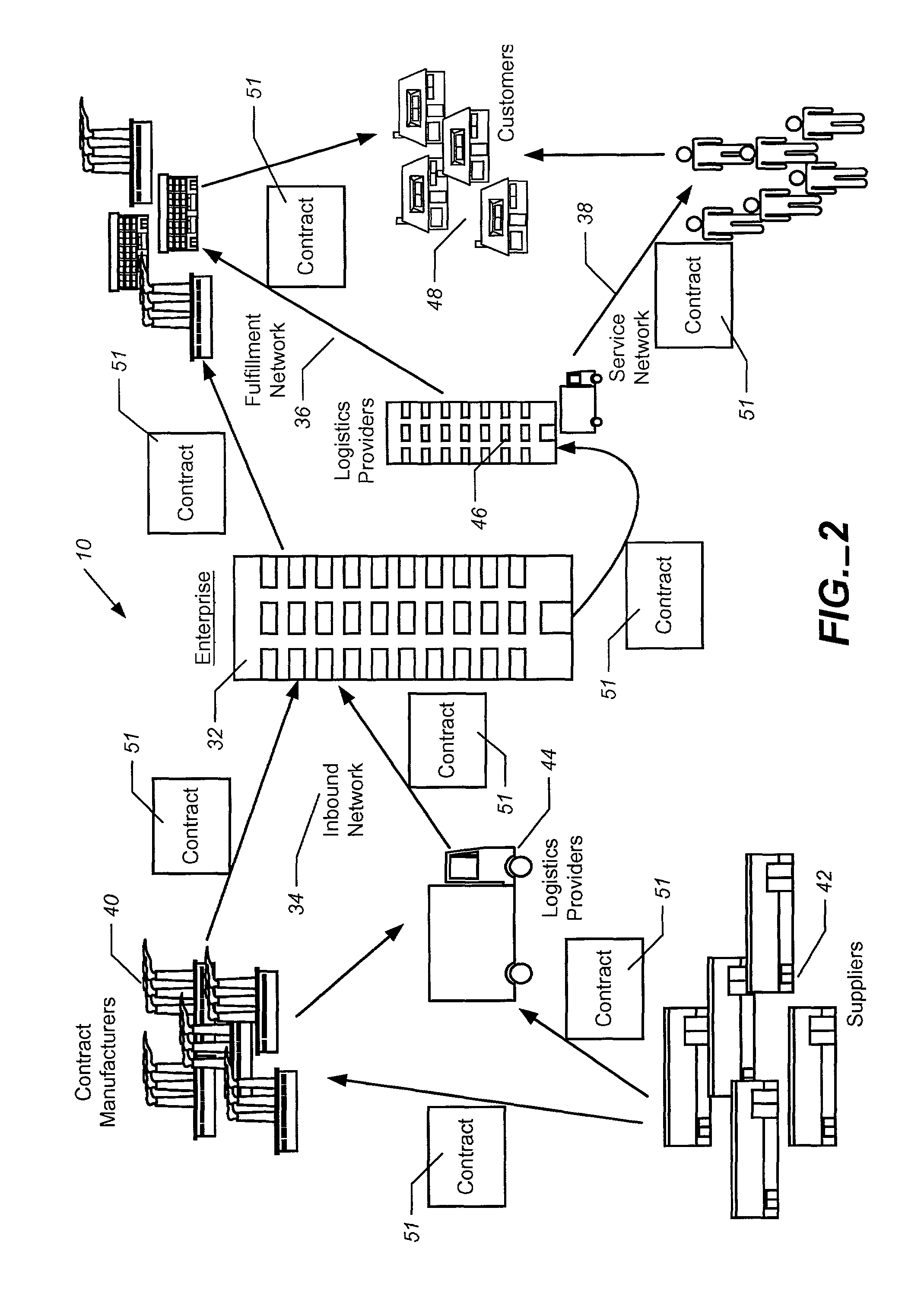Policy based automation for a supply chain
a technology of supply chain and policy, applied in the field of supply chain management, can solve the problems of inability to adapt to provide a versatile system capable, components themselves may involve complex supply chains, and the vertical integration is unfeasible for any but the largest enterprises, and achieves the effect of being easily modified
- Summary
- Abstract
- Description
- Claims
- Application Information
AI Technical Summary
Benefits of technology
Problems solved by technology
Method used
Image
Examples
Embodiment Construction
[0035]Turning first to the nomenclature of the specification, the detailed description which follows is represented largely in terms of processes and symbolic representations of operations performed by conventional computer components, such as a local or remote central processing unit (CPU), processor, server, or other suitable processing device associated with a general purpose or specialized computer system, memory storage devices for the processing device, and connected local or remote pixel-oriented display devices. These operations may include the manipulation of data bits by the processing device and the maintenance of these bits within data structures resident in one or more of the memory storage devices. Such data structures impose a physical organization upon the collection of data bits stored within computer memory and represent specific electrical or magnetic elements. These symbolic representations are the means used by those skilled in the art of computer programming an...
PUM
 Login to View More
Login to View More Abstract
Description
Claims
Application Information
 Login to View More
Login to View More - R&D
- Intellectual Property
- Life Sciences
- Materials
- Tech Scout
- Unparalleled Data Quality
- Higher Quality Content
- 60% Fewer Hallucinations
Browse by: Latest US Patents, China's latest patents, Technical Efficacy Thesaurus, Application Domain, Technology Topic, Popular Technical Reports.
© 2025 PatSnap. All rights reserved.Legal|Privacy policy|Modern Slavery Act Transparency Statement|Sitemap|About US| Contact US: help@patsnap.com



